#Albert Rémy
Photo
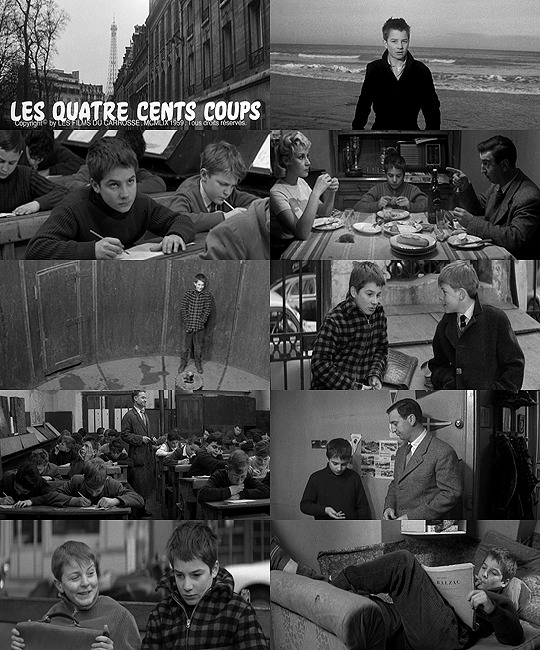
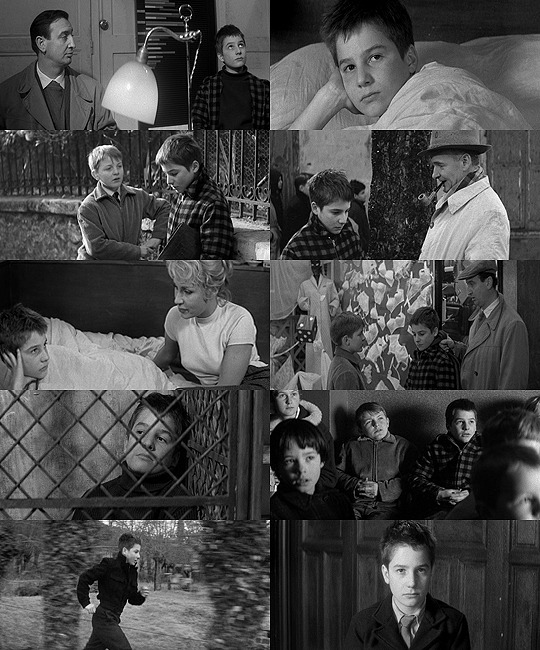
Films Watched in 2023:
51. Les Quatre Cents Coups/The 400 Blows (1959) - Dir. François Truffaut
#Les Quatre Cents Coups#The 400 Blows#François Truffaut#Jean-Pierre Léaud#Claire Maurier#Albert Rémy#Georges Flamant#Patrick Auffay#Robert Beauvais#Yvonne Claudie#Pierre Repp#Guy Decomble#Antoine Doinel#Films Watched in 2023#My Edits#My Post
8 notes
·
View notes
Text
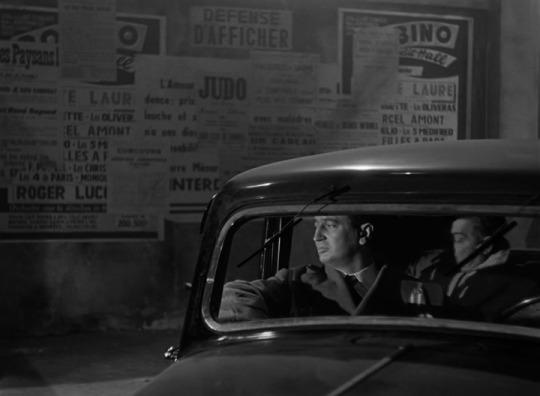

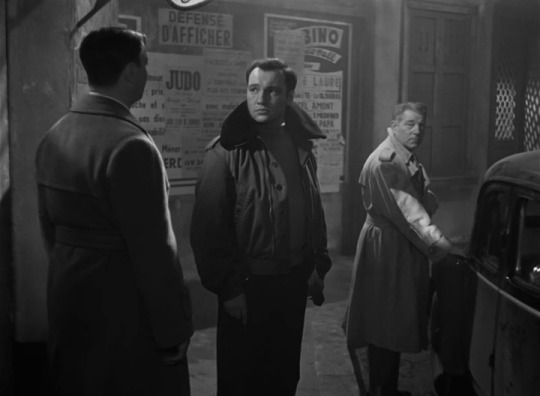

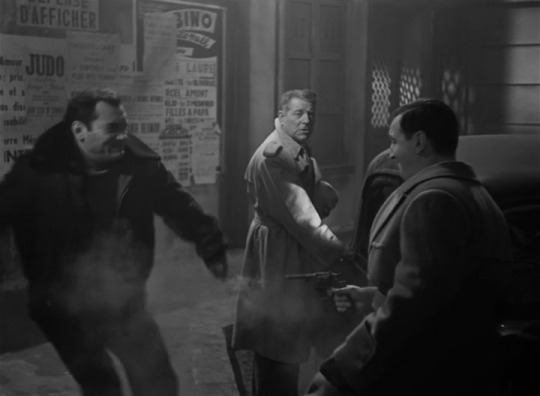
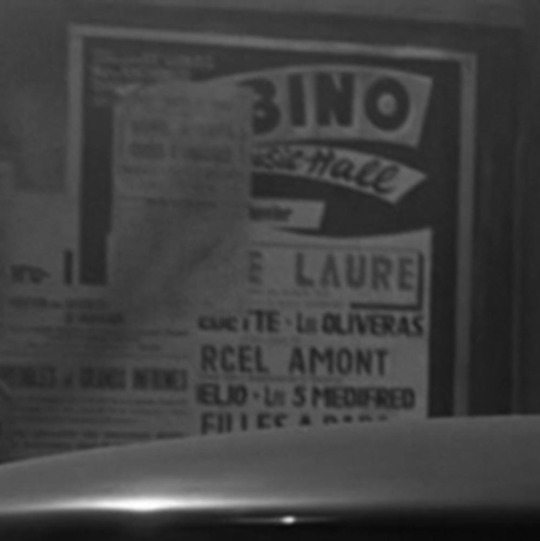
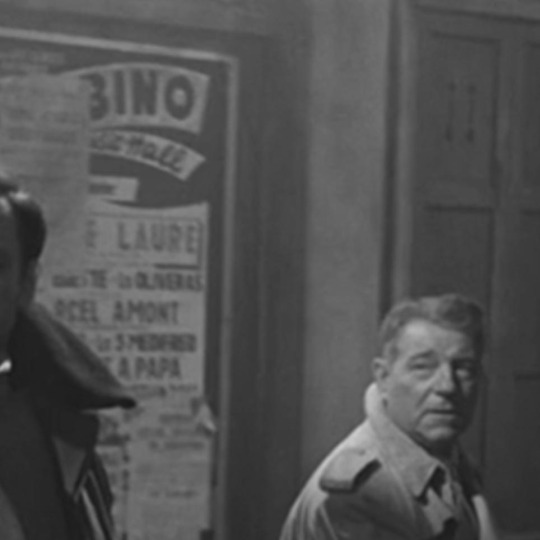
Marcel Amont à Bobino - Razzia sur la chnouf (Henri Decoin 1955).
RIP Marcel Amont (1929-2023).
3 notes
·
View notes
Text
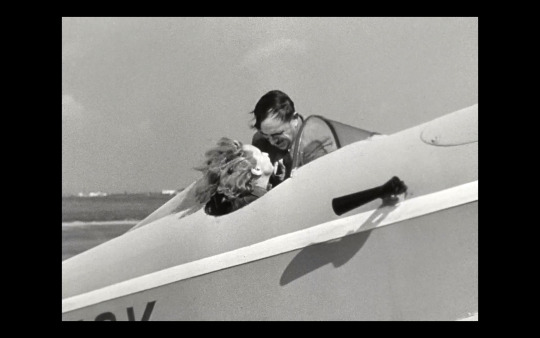


Le Ciel est à vous (The Woman Who Dared)
1944. Romantic Adventure Drama
By Jean Grémillon
Starring: Madeleine Renaud, Charles Vanel, Jean Debucourt, Raymonde Vernay, Léonce Corne, Raoul Marco, Albert Rémy, Robert Le Fort, Anne-Marie Labaye, Michel François, Gaston Mauger, Paul Demange, Henry Houry, Anne Vandène
Country: France
Language: French
#Le Ciel est à vous#The Woman Who Dared#Jean Grémillon#Madeleine Renaud#Charles Vanel#Jean Debucourt#Raymonde Vernay#Léonce Corne#Raoul Marco#Albert Rémy#Robert Le Fort#Anne-Marie Labaye#Michel François#Gaston Mauger#Paul Demange#Henry Houry#Anne Vandène#France#French#1944#1940s#Romance#Adventure#Drama
1 note
·
View note
Text


W A T C H E D
Such a great movie. Used to make my dad so happy. He loved Jackie Gleason.
One summer when I was like 10 he found it on the classic movies channel and we sprawled out on the couch and watched it together.
I miss him terribly. So my mom and I watched it for his birthday together.
#GIGOT (1962)#JACKIE GLEASON#Gene Kelly#Gabrielle Dorziat#Jean Lefebvre#Jacques Marin#Albert Rémy#Yvonne Constant#Albert Dinan#Frank Villard#Camille Guérini#René Havard#COMEDY#mute character#watching#apamnak
0 notes
Text
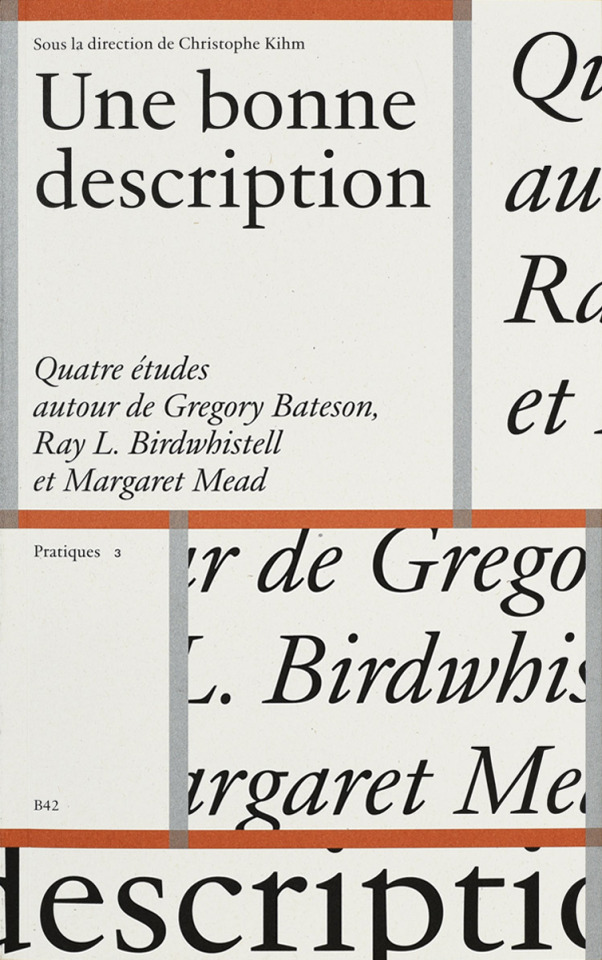
Une bonne description. Quatre études autour de Gregory Bateson, Ray L. Birdwhistell et Margaret Mead, Designed deValence, B42-210, Éditions B42, Montreuil, 2024
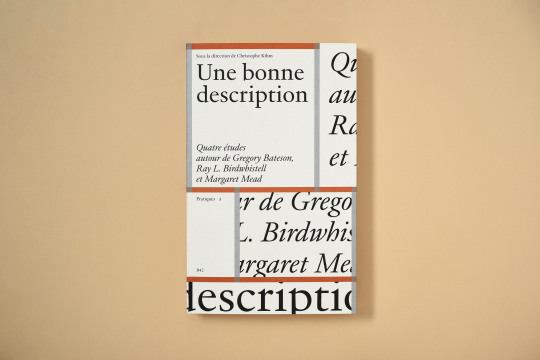
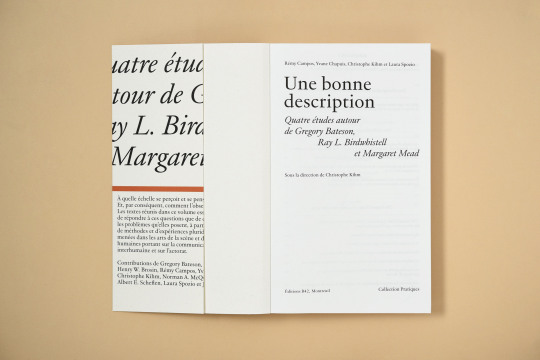
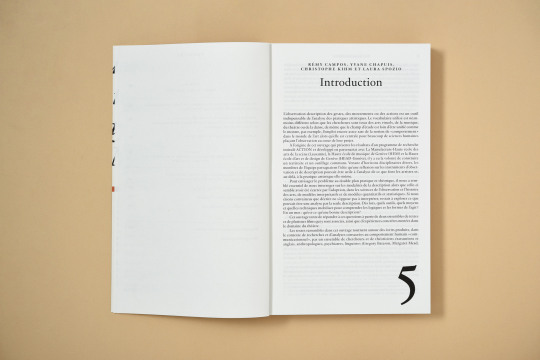
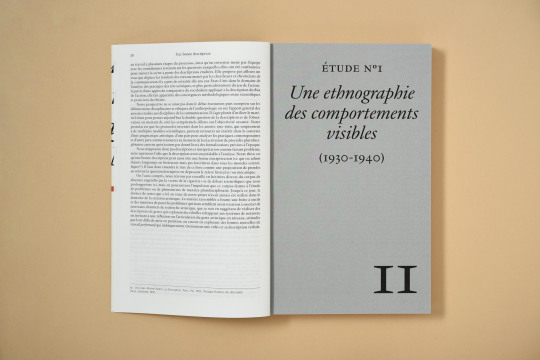
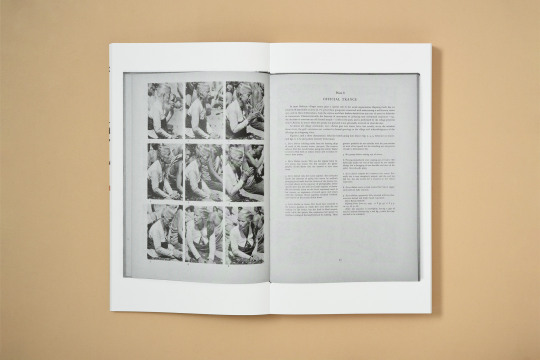
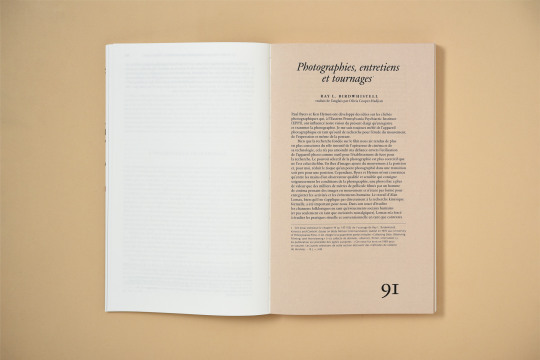
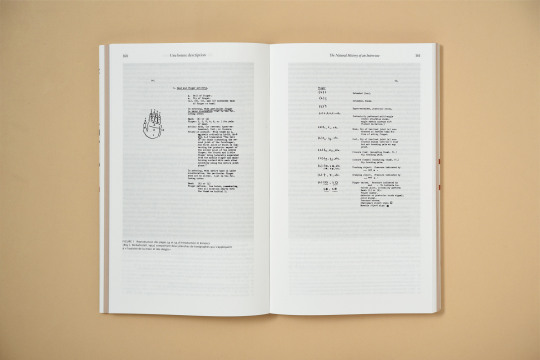


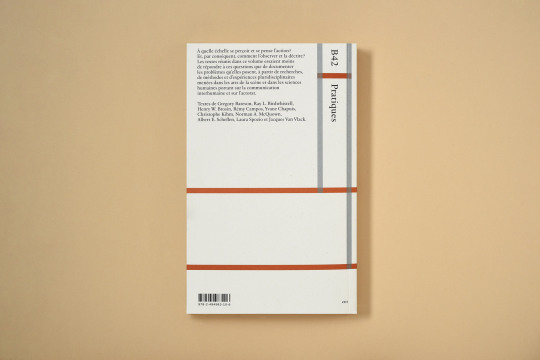
Texts: Gregory Bateson, Ray L. Birdwhistell, Henry W. Brosin, Rémy Campos, Yvane Chapuis, Christophe Kihm, Norman A. McQuown, Albert E. Scheflen, Laura Spozio, Jacques Van Vlack
#graphic design#typography#anthropology#cybernetics#communication#theory of communication#communication theory#psychology#semiotics#linguistics#book#cover#book cover#back cover#gregory bateson#ray l. birdwhistell#margaret mead#devalence#éditions b42#2020s
14 notes
·
View notes
Text

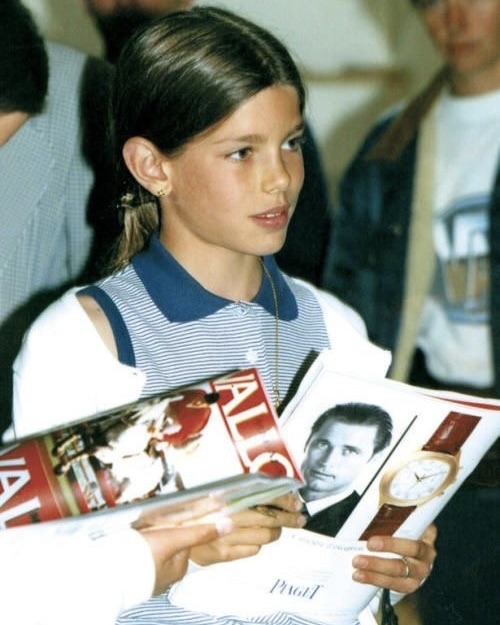

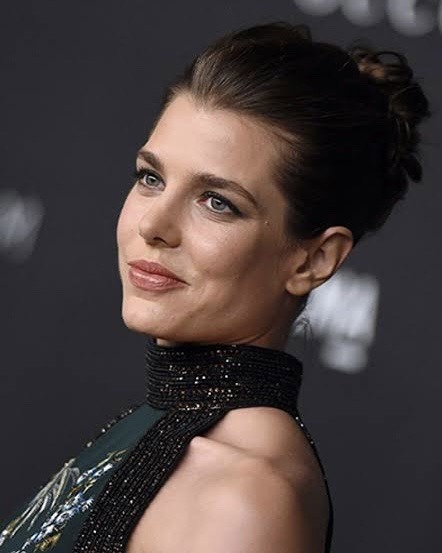
Happy 37th birthday to Charlotte Casiraghi!
Born on 3 August 1986, Charlotte Marie Pomeline Casiraghi is the second child of Caroline, Princess of Hanover, and Stefano Casiraghi, a niece of Prince Albert II of Monaco and a granddaughter of Rainier III and Grace Kelly. She is eleventh in line to the throne of Monaco.
On 17 December 2013 Charlotte gave birth to her first son, Raphaël, with stand-up comedian and actor Gad Elmaleh.
On 23 October 2018, Charlotte gave birth to her second child, a son named Balthazar, with Dimitri Rassam. The couple married civilly at the Prince's Palace of Monaco on 1 June 2019 and religiously on 29 June 2019, at the Abbey of Sainte-Marie de Pierredon, outside Saint-Rémy-de-Provence.
32 notes
·
View notes
Text
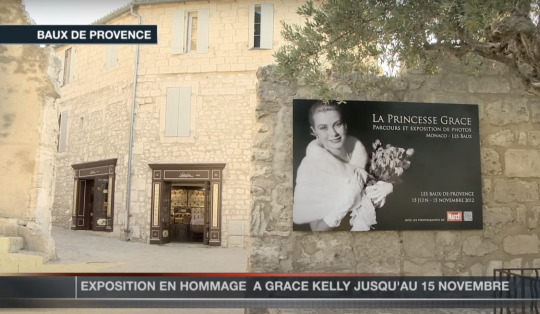
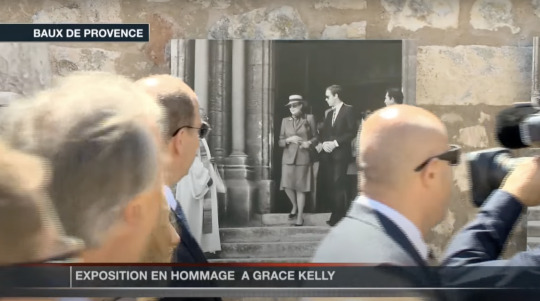
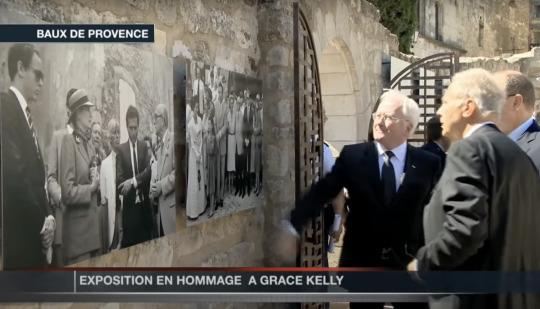
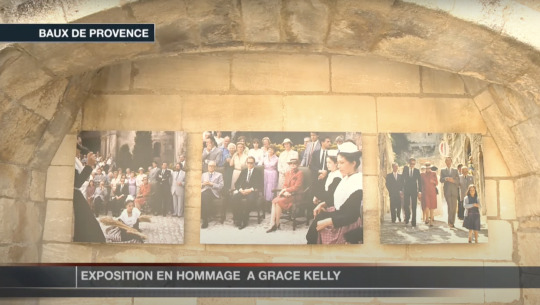
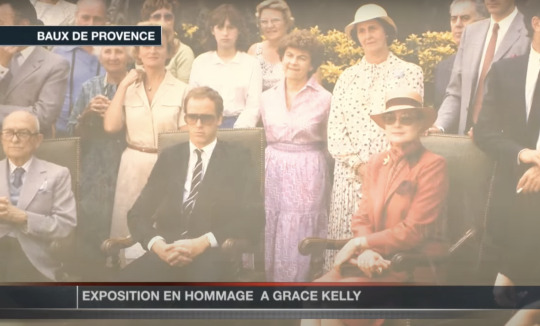
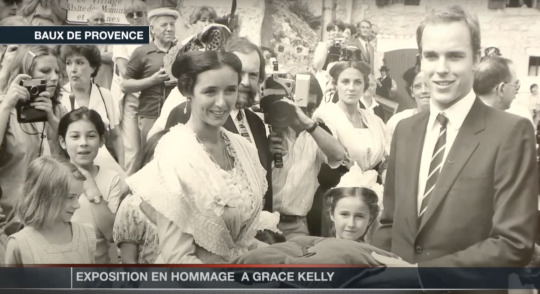
Princess Grace of Monaco tribute exposition at Baux-de-Provence, in France in 2012.
In June 1982, the people of Les Baux gave an official reception for Prince Albert of Monaco, who attended accompanied with her mother, Princess Grace, and presented him with the keys of the town. The princess would die that three months later, in September 14th, in a car accident near Monaco.
To celebrate the opening of The Princess Grace Photo Album, a group of regional dignitaries, tourism authorities, and local business owners were welcomed for a private tour and gala luncheon this summer. The guest of honor was Diane E. Kelly, the Consul General of the U.S. in Marseille and Monaco.
Apparently, the Grimaldi family back in 1642 helped Louis XIII beat off the Spanish and were rewarded with Les Baux and Saint-Rémy-de-Provence. The Grimaldis’ palace there was requisitioned during the Revolution but they have kept the titles. There’s a supplement on this, with photos and info on the life of Princess Grace, in this week’s Paris Match.
5 notes
·
View notes
Text
Gala Québec Cinéma 2023: les nominations

Animé par Jay Du Temple, le 25e Gala Québec Cinéma sera diffusé le dimanche 10 décembre prochain à 20h sur les ondes de Noovo et Noovo.ca, en direct des studios Grandé de Montréal. Le Gala Artisans, animé par Fabiola Nyrva Aladin, aura lieu le 7 décembre à 19h30 au Studio TD.
Voici la liste complète des nominations:
IRIS HOMMAGE
Rémy Girard
MEILLEUR FILM
Arsenault et Fils | La maison de prod — Stéphanie Morissette, Charles Stéphane Roy
Babysitter | Amérique Film — Martin Paul-Hus, Catherine Léger ; Phase 4 Productions — Pierre-Marcel Blanchot, Fabrice Lambot
Falcon Lake | Metafilms — Nancy Grant, Sylvain Corbeil ; Onzecinq — Dany Boon, Jalil Lespert ; Cinéfrance Studios — Julien Deris, David Gauquié, Jean-Luc Ormières
Le plongeur | Sphère Média — Marie-Claude Poulin
Les chambres rouges | Némésis Films — Dominique Dussault
Noémie dit oui | Productions Leitmotiv — Patricia Bergeron
Viking | micro_scope — Luc Déry, Kim McCraw
MEILLEUR PREMIER FILM
Falcon Lake | Charlotte Le Bon
Farador | Édouard Albernhe Tremblay
Les hommes de ma mère | Anik Jean
Noémie dit oui | Geneviève Albert
Rodéo | Joëlle Desjardins Paquette
MEILLEURE RÉALISATION
Monia Chokri | Babysitter
Stéphane Lafleur | Viking
Francis Leclerc | Le plongeur
Rafaël Ouellet | Arsenault et Fils
Pascal Plante | Les chambres rouges
MEILLEUR SCÉNARIO
Eric K. Boulianne, Francis Leclerc | Le plongeur
Stéphane Lafleur, Eric K. Boulianne | Viking
Catherine Léger | Babysitter
Rafaël Ouellet | Arsenault et Fils
Pascal Plante | Les chambres rouges
MEILLEURE INTERPRÉTATION FÉMININE | PREMIER RÔLE
Larissa Corriveau (Steven) | Viking
Kelly Depeault (Noémie) | Noémie dit oui
Hélène Florent (Rose Lemay) | Une femme respectable
Léane Labrèche-Dor (Elsie) | Les hommes de ma mère
Sara Montpetit (Chloé) | Falcon Lake
MEILLEURE INTERPRÉTATION MASCULINE | PREMIER RÔLE
Guillaume Cyr (Adam) | Arsenault et Fils
Patrick Hivon (Cédric) | Babysitter
Steve Laplante (John) | Viking
Henri Picard (Stéphane) | Le plongeur
Luc Picard (Gérald Gallant) | Confessions
MEILLEURE INTERPRÉTATION FÉMININE | RÔLE DE SOUTIEN
Laurie Babin (Clémentine) | Les chambres rouges
Élise Guilbault (Soeur Monique) | Le temps d’un été
Ève Landry (Josée) | Bungalow
Julie Le Breton (Isabelle) | Tu te souviendras de moi
Nadia Tereszkiewicz (Amy) | Babysitter
MEILLEURE INTERPRÉTATION MASCULINE | RÔLE DE SOUTIEN
Maxime de Cotret (Greg) | Le plongeur
Charles-Aubey Houde (Bébert) | Le plongeur
Denis Houle (Liz)| Viking
Steve Laplante (Jean-Michel) | Babysitter
Guy Nadon (Maître Jean-Pierre Genin) | Le temps d’un été
RÉVÉLATION DE L’ANNÉE
Fabiola N. Aladin (Janet) | Viking
Emi Chicoine (Léa) | Noémie dit oui
Virginie Fortin (Elsa) | 23 décembre
Juliette Gariépy (Kelly-Anne) | Les chambres rouges
Joan Hart (Bonnie) | Le plongeur
François Pérusse (Alain) | Niagara
MEILLEURE DISTRIBUTION DES RÔLES
Nathalie Boutrie — Nathalie Boutrie Casting | Arsenault et Fils
Marilou Richer — Marilou Richer Casting | Les chambres rouges
Lucie Robitaille, Dandy Thibaudeau — Casting Lucie Robitaille | Viking
Annie St-Pierre, Antoinette Boulat | Babysitter
Brigitte Viau — Casting Brigitte Viau | Le plongeur
MEILLEURE DIRECTION ARTISTIQUE
André-Line Beauparlant | Viking
Sylvie Desmarais| Bungalow
Mathieu Lemay | Le plongeur
Laura Nhem | Les chambres rouges
Colombe Raby | Babysitter
MEILLEURE DIRECTION DE LA PHOTOGRAPHIE
Steve Asselin | Le plongeur
Vincent Biron| Les chambres rouges
Kristof Brandl | Falcon Lake
Josée Deshaies | Babysitter
Sara Mishara | Viking
MEILLEURS EFFETS VISUELS
Marc Hall — A.A. Studios | Babysitter
Marc Hall — A.A. Studios, Alex GD — RGB124 | Farador
Marc Hall — A.A. Studios | La cordonnière
Marie-Claude Lafontaine, Simon Beaupré — Alchimie 24 | Viking
Mathilde Vézina-Bouchard | Mistral spatial
MEILLEUR SON
Sylvain Bellemare, Bernard Gariépy Strobl, Pierre Bertrand | Viking
Olivier Calvert, Stéphane Bergeron, Martyne Morin | Les chambres rouges
Olivier Calvert, Luc Boudrias, Yann Cleary | Le plongeur
Stephen De Oliveira, Séverin Favriau, Stéphane Thiébaut | Falcon Lake
Daniel Fontaine-Bégin, Luc Boudrias, Henry Jr Godding | Arsenault et Fils
MEILLEUR MONTAGE
Pauline Gaillard | Babysitter
Sophie Leblond| Viking
Myriam Magassouba | Arsenault et Fils
Jonah Malak | Les chambres rouges
Isabelle Malenfant | Le plongeur
MEILLEURE MUSIQUE ORIGINALE
Viviane Audet, Robin-Joël Cool, Alexis Martin | Arsenault et Fils
Daniel Bélanger | Confessions
Christophe Lamarche-Ledoux, Mathieu Charbonneau | Viking
Martin Léon | Tu te souviendras de moi
Dominique Plante | Les chambres rouges
MEILLEURS COSTUMES
Mariane Carter | La cordonnière
Guillaume Laflamme | Babysitter
Sophie Lefebvre | Une femme respectable
Sophie Lefebvre | Viking
Annabelle Roy, Delphine Gagné | Farador
MEILLEUR MAQUILLAGE
Kathryn Casault, Bruno Gatien | Confessions
Marie-Josée Galibert | Viking
Marie Salvado | Les chambres rouges
Lyne Tremblay, Faustina De Sousa, François Gauthier, Michael Loncin | Farador
Adriana Verbert | Babysitter
MEILLEURE COIFFURE
Vincent Dufault | Viking
André Duval | Une femme respectable
Nermin Grbic | Les chambres rouges
Richard Hansen, Réjean Forget, Johanne Hansen | La cordonnière
Ann-Louise Landry | Babysitter
MEILLEUR FILM DOCUMENTAIRE
Dear Audrey | Réalisation : Jeremiah Hayes | Scénario : Jeremiah Hayes | Office national du film du
Canada — Jeremiah Hayes, André Barro, Annette Clarke
Gabor | Réalisation : Joannie Lafrenière | Scénario : Joannie Lafrenière | Tak films — Line Sander Egede
Geographies of Solitude | Réalisation : Jacquelyn Mills | Scénario : Jacquelyn Mills | Rosalie Chicoine
Perreault, Jacquelyn Mills
Je vous salue salope : la misogynie au temps du numérique | Réalisation : Léa Clermont-Dion, Guylaine
Maroist | Scénario : Léa Clermont-Dion, Guylaine Maroist | La Ruelle Films — Eric Ruel, Guylaine Maroist
Rojek | Réalisation : Zaynê Akyol | Scénario : Zaynê Akyol | Metafilms — Sylvain Corbeil, Audrey-Ann
Dupuis-Pierre ; Zaynê Akyol
MEILLEURE DIRECTION DE LA PHOTOGRAPHIE | FILM DOCUMENTAIRE
Geoffroy Beauchemin | Humus
Nicolas Canniccioni, Arshia Shakiba | Rojek
Joannie Lafrenière | Gabor
Jacquelyn Mills | Geographies of Solitude
Maude Plante-Husaruk | Au-delà des hautes vallées
MEILLEUR SON | FILM DOCUMENTAIRE
Mélanie Gauthier, Jeremiah Hayes, Isabelle Lussier | Dear Audrey
Maxime Lacoste-Lebuis, Eric Shaw, Jean Paul Vialard | Au-delà des hautes vallées
Andreas Mendritzki, Jacquelyn Mills | Geographies of Solitude
Jean-François Sauvé, Martin M. Messier, Bruno Pucella | 305 Bellechasse
Catherine Van Der Donckt, Jean Paul Vialard | Au-delà du papier
MEILLEUR MONTAGE | FILM DOCUMENTAIRE
Mathieu Bouchard-Malo| Rojek
Jeremiah Hayes | Dear Audrey
Emmanuelle Lane | Gabor
Jacquelyn Mills | Geographies of Solitude
Oana Suteu Khintirian | Au-delà du papier
MEILLEURE MUSIQUE ORIGINALE | FILM DOCUMENTAIRE
Olivier Alary, Johannes Malfatti | Twice Colonized
Gervaise | Gabor
Walter Grimshaw | Dear Audrey
Maxime Lacoste-Lebuis | Au-delà des hautes vallées
Delphine Measroch | Humus
MEILLEUR COURT OU MOYEN MÉTRAGE | ANIMATION
A night for the dogs | Max Woodward | Confettis Production — Guillaume Dubois, Camille Lequenne
Harvey | Janice Nadeau | Folimage – Reginald de Guillebon, Pierre Méloni ; Office national du film du
Canada — Marc Bertrand, Christine Noël, Julie Roy
Madeleine | Raquel Sancinetti | Production : Raquel Sancinetti
Marie · Eduardo · Sophie | Thomas Corriveau | Production : Thomas Corriveau
Triangle noir | Marie-Noëlle Moreau Robidas | Embuscade Films — Nicolas Dufour-Laperrière
MEILLEUR COURT OU MOYEN MÉTRAGE | DOCUMENTAIRE
Belle River | Guillaume Fournier, Samuel Matteau, Yannick Nolin | Kinomada — Jean-Pierre Vézina
Fire-Jo-Ball | Audrey Nantel-Gagnon | Office national du film du Canada — Nathalie Cloutier
Notes sur la mémoire et l’oubli | Amélie Hardy | Club Vidéo de Montréal — Isabelle Grignon-Francke
Oasis | Justine Martin | Déjà Vu — Louis-Emmanuel Gagné-Brochu
Zug Island | Nicolas Lachapelle | Production : Guillaume Collin, Nicolas Lachapelle
MEILLEUR COURT OU MOYEN MÉTRAGE | FICTION
Invincible | Vincent René-Lortie | Telescope Films — Élise Lardinois, Samuel Caron
Nanitic | Carol Nguyen | Coop Vidéo de Montréal — Marie Lytwynuk ; Carol Nguyen
Nuit blonde | Gabrielle Demers | Cinquième maison — Nellie Carrier
Pas de fantôme à la morgue | Marilyn Cooke | La 115e — Kélyna N. Lauzier, Macha Houssart
Simo | Aziz Zoromba | Scarab Films — Rosalie Chicoine Perreault
PRIX DU PUBLIC
23 décembre | Immina Films — Patrick Roy | A Média Productions — Guillaume Lespérance |
Réalisation : Miryam Bouchard | Scénario : India Desjardins
Confessions | Les Films Opale — Christian Larouche, Sébastien Létourneau | Christal Film Productions —
Christian Larouche | Réalisation : Luc Picard | Scénario : Sylvain Guy
Katak le brave béluga | Attraction Distribution — Xiaojuan Zhou, Maison 4:3 — Chantale Pagé | 10e Ave
Productions — Nancy Florence Savard | Réalisation : Christine Dallaire-Dupont, Nicola Lemay | Scénario :
Andrée Lambert
Le temps d’un été | Immina Films — Patrick Roy | Attraction — Antonello Cozzolino, Brigitte Léveillé |
Réalisation : Louise Archambault | Scénario : Marie Vien
Les hommes de ma mère | Immina Films — Patrick Roy | Jessie Films — Patrick Huard, Anik Jean |
Réalisation : Anik Jean | Scénario : Maryse Latendresse
FILM S’ÉTANT LE PLUS ILLUSTRÉ À L’EXTÉRIEUR DU QUÉBEC
Cette maison | Embuscade Films — Félix Dufour-Laperrière | Réalisation : Miryam Charles | Scénario :
Miryam Charles | La Distributrice de films — Serge Abiaad
Dounia et la princesse d’Alep | Tobo — Judith Beauregard | Réalisation : Marya Zarif, André Kadi |
Scénario : Marya Zarif | Maison 4:3 — Chantale Pagé
Falcon Lake| Metafilms — Nancy Grant, Sylvain Corbeil ; Onzecinq — Dany Boon, Jalil Lespert ;
Cinéfrance Studios — Julien Deris, David Gauquié, Jean-Luc Ormières | Réalisation : Charlotte Le Bon |
Scénario : Charlotte Le Bon | Sphère Films — Ariane Giroux-Dallaire
Katak le brave béluga | 10e Ave Productions — Nancy Florence Savard | Réalisation : Christine Dallaire-
Dupont, Nicola Lemay | Scénario : Andrée Lambert | Attraction Distribution — Xiaojuan Zhou,
Maison 4:3 — Chantale Pagé
Viking | micro_scope — Luc Déry, Kim McCraw | Réalisation : Stéphane Lafleur | Scénario : Stéphane
Lafleur, Eric K. Boulianne | Les Films Opale — Christian Larouche, Sébastien Létourneau
3 notes
·
View notes
Text
The Antoine Doinel Cycle

Jean-Pierre Léaud in The 400 Blows (François Truffaut, 1959)
Cast: Jean-Pierre Léaud, Albert Rémy, Claire Maurier, Patrick Auffay, Georges Flamant. Screenplay: François Truffaut, Marcel Moussy. Cinematography: Henri Decaë. Film editing: Marie-Josèphe Yoyotte. Music: Jean Constantin.
One of the unquestioned great movies, and one of the greatest feature-film directing debuts, The 400 Blows would still resonate with film-lovers even if François Truffaut hadn't gone on to create four sequels tracking the life and loves of his protagonist, Antoine Doinel (Jean-Pierre Léaud). There are, in fact, those who think that the last we should have seen of Antoine was the haunting freeze-frame at the end of the film. But Antoine continued to grow up on screen, and perhaps more remarkably, so did Léaud, carving out his own career after his debut as a 13-year-old. (It's hard to think of any American child actors who were able to maintain a film career into adulthood as well as Léaud did. Mickey Rooney? Dean Stockwell? Who else?) Having Truffaut as a mentor certainly helped, but Léaud had an unmistakable gift. He is on screen for virtually all of the 99-minute run time, and provides a gallery of memorable moments: Antoine in the amusement-park centrifuge, Antoine in the police lockup, Antoine on the run -- in cinematographer Henri Decaë's brilliant long tracking shot. And my personal favorite moment: when the psychologist asks Antoine if he's ever had sex. Léaud responds with a beautiful mixture of surprise, amusement, and embarrassment. It's so genuine a response that I have to think it was improvised, that Truffaut surprised Léaud with the question. But even so, Léaud never drops character in his response. This praise of Léaud is not to undervalue the magnificent supporting cast, or the haunting score by Jean Constantin. It's a film in which everything works.

Jean-Pierre Léaud and Marie-France Pisier in Antoine and Colette (François Truffaut, 1962)
Cast: Jean-Pierre Léaud, Marie-France Pisier, Rosy Varte, François Darbon, Patrick Auffay, Jean-François Adam. Screenplay: François Truffaut. Cinematography: Raul Coutard. Music: Georges Delerue.
Four years after he made The 400 Blows, Truffaut was asked to contribute to an anthology of short films by directors from various countries to be called Love at Twenty. As he had with the first film, Truffaut drew on his own experience, an infatuation with a girl he had met at the Cinémathèque Française. And since Léaud was available -- he had worked with Julien Duvivier on Boulevard (1960) after completing The 400 Blows -- it made sense for him to play Antoine Doinel again. A narrator tells us that Antoine had been sent to another reform school after escaping from the first, and that this time he had responded well to a psychologist: After leaving school, he has found a job working for the Phillips record company and is living on his own. Then he sees a pretty young woman at a concert of music by Berlioz and falls for her. Colette (Marie-France Pisier) is not much interested in him, but she is evidently flattered by his advances. Her parents like Antoine and encourage him so much that he rents a room across the street from them. (Truffaut had done the same thing during his crush.) But one evening when he comes to dinner at their apartment, a man named Albert (Jean-François Adam) calls on Colette and she leaves Antoine watching TV with her parents. It's a droll little film, scarcely more than an anecdote, and the stable, lovestruck Antoine doesn't seem much like either the rebellious Antoine of the first film or the more scattered Antoine of the later ones in the cycle.
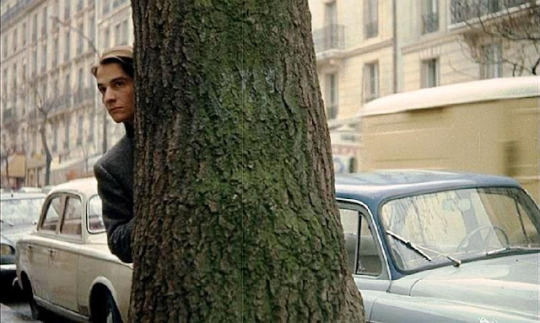
Jean-Pierre Léaud in Stolen Kisses (François Truffaut, 1968)
Cast: Jean-Pierre Léaud, Claude Jade, Michael Lonsdale, Delphine Seyrig, Michael Lonsdale, Claire Duhamel, Daniel Ceccaldi. Screenplay: François Truffaut, Claude de Givray, Bernard Revon. Cinematography: Denys Clerval. Production design: Claude Pignot. Film editing: Agnès Guillemot. Music: Antoine Duhamel.
The Antoine of Stolen Kisses is in his 20s, but has reverted to the more haphazard ways of his adolescence: He has been kicked out of the army, and now relies on a series of odd jobs to get by. But he has also renewed acquaintance with a young woman he met before going into the army, Christine Darbon (Claude Jade). Like Colette's parents, hers are quite taken with Antoine, and they help him get a job as a night clerk in a hotel. He gets fired from that job after helping a private detective who is spying on an adulterous couple, but the detective helps Antoine get a job with his agency. While working for the detective agency, he has to pose as a clerk in a shoe store, and winds up in a liaison with the store owner's wife, Fabienne (Delphine Seyrig). When that ends badly, he becomes a TV repairman, which brings him back to Christine, with whom he winds up in bed after trying to fix her TV. At the film's end, a strange man who has been following Christine comes up to her and Antoine in the park and declares his love for her. She says he must be crazy, and Antoine, who perhaps recognizes his earlier infatuation with Colette in the man's obsession, murmurs, "He must be." Stolen Kisses is the loosest, funniest entry in the cycle, though it was made at a time when Truffaut was politically preoccupied: The film opens with a shot of the shuttered gates of the Cinémathèque Française, which was shut down in a conflict between its director, Henri Langlois, and culture minister André Malraux. This caused an uproar involving many of the directors of the French New Wave. Some of Antoine's anarchic approach to life may have been inspired by the rebelliousness toward the establishment prevalent in the film community. But it's clear that the idea of a cycle of Antoine Doinel films has been brewing in Truffaut's mind: There is a cameo appearance by Marie-France Pisier as Colette and Jean-François Adam as Albert, now married and the parents of an infant.

Claude Jade and Jean-Pierre Léaud in Bed and Board (François Truffaut, 1970)
Cast: Jean-Pierre Léaud, Claude Jade, Claire Duhamel, Daniel Ceccaldi, Hiroko Berghauer. : François Truffaut, Claude de Givray, Bernard Revon. Cinematography: Néstor Almendros. Production design: Jean Mandaroux. Film editing: Agnès Guillemot. Music: Antoine Duhamel.
Antoine and Christine have married, and they have settled down in a small apartment. (There's some indication that it's paid for by her parents.) She gives violin lessons and he sells flowers -- carnations, which he dyes, using some environmentally questionable potions. But settling down isn't in Antoine's nature, and when Christine gets pregnant he looks for more lucrative work. He finds a curious sinecure in a company run by an American: Antoine maneuvers model ships by remote control through a mockup of a harbor. ("It gives me time to think," he says.) One day, a Japanese businessman comes to see the demonstration, accompanied by a pretty translator named Kyoko (Hiroko Berghauer), and Antoine is soon involved in an affair with her. Naturally, this precipitates a breakup, though by film's end they have seemingly reconciled. Still, it's obvious that the marriage is not destined to be permanent. They can't even agree on a name for their son: She wants him to be called Ghislain, and he wants to call him Alphonse. Antoine wins out by a trick: He's the one who goes to the registry office to legalize the boy's name. Antoine also spends time writing a novel about his boyhood, to which Christine objects: "I don't like this business of writing about your childhood, dragging your parents through the mud. I don't know much but I do know one thing: If you use art to settle accounts, it's no longer art." Truffaut had his own regrets about the portrait of his parents in The 400 Blows. Less farcical than Stolen Kisses, Bed and Board still has a strong vein of comedy tinged with melancholy.
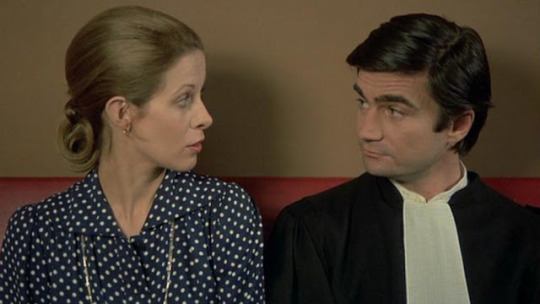
Claude Jade and Jean-Pierre Léaud in Love on the Run (François Truffaut, 1979)
Cast: Jean-Pierre Léaud, Marie-France Pisier, Claude Jade, Dani, Dorothée, Daniel Mesguich, Julien Bertheau. Screenplay: François Truffaut, Marie-France Pisier, Jean Aurel, Suzanne Schiffman. Cinematography: Néstor Almendros. Production design: Jean-Pierre Kohut-Svelko. Film editing: Martine Barraqué. Music: Georges Delerue.
Truffaut admitted that he wasn't happy with the final film in the cycle. It's a bit too heavily reliant on flashback clips from the four earlier films, and if it's intended to show that Antoine has finally stabilized now that he's in his 30s and divorced from Christine, it doesn't quite make the case. He has a new girlfriend, Sabine (Dorothée), his novel has been published several years earlier, and he works as a proofreader for a printing house. He's on friendly terms with Christine, and agrees to take their son, Alphonse, to the train station when the boy leaves for a summer music camp. At the station, he runs into Colette, now a defense lawyer, who is on her way to confer with a client -- a man who has murdered his 3-year-old boy. Perhaps a little too coincidentally, Colette is involved with Sabine's brother, Xavier (Daniel Mesguich), and she has bought a copy of Antoine's novel to read on the train. Antoine impulsively boards the train, and sets up a meeting with Colette in the dining car, after which she invites him back to her compartment. All of this sets up a series of revelations: Colette's marriage to Albert broke up after their small daughter was killed by a car. She claims that she supplements her small income as a lawyer by prostituting herself with men she meets on trains. Antoine finally made peace with his mother after her death when he met her old lover, M. Lucien (Julien Bertheau), who persuaded him to visit his mother's grave. (There is a flashback to the scene in The 400 Blows when Antoine, playing hooky, sees his mother kissing a strange man on the street.) Antoine became infatuated with Sabine after hearing a man in a phone booth arguing with a woman on the other end of the line and then tearing up her photograph. Antoine picked up the pieces from the floor, put them together, and after some sleuthing, discovered the woman was Sabine. His marriage to Christine finally broke up after he slept with her friend Liliane (Dani), who he previously had thought was having a lesbian relationship with Christine. And so on. The result of all the flashbacks and revelations is not to round out the Antoine Doinel saga, but to make Love on the Run feel over-contrived.
#The 400 Blows#Jean-Pierre Léaud#Marie-France Pisier#François Truffaut#Antoine and Colette#Stolen Kisses#Bed and Board#Claude Jade#Love on the Run
15 notes
·
View notes
Text
Filmes: Os Incompreendidos (1959)
OS INCOMPREENDIDOS
Título Original: Les Quatre Cents Coups
País: França
Ano: 1959
Duração: 99 minutos
Direção: François Truffaut
Elenco: Jean-Pierre Léaud, Albert Rémy, Claire Maurier, Guy Decomble, Patrick Auffay, Georges Flamant, Pierre Repp, Daniel Couturier, Luc Andrieux.
Sinopse: Por conta de uma rebeldia natural e incontrolável, o adolescente Antoine Doinel tem problemas de relacionamento com a mãe e o padrasto, e se sente perseguido pelos professores da escola. Ele mata aula para ficar andando pelas ruas com os colegas, mas um dia quando comete um roubo, é preso e mandado para um reformatório para jovens delinquentes.

Os Incompreendidos teve seu lançamento no Festival de Cannes no dia de hoje, 4 de maio, em 1959. François Truffaut, então um dos mais conhecidos críticos da revista francesa Cahiers du Cinéma, faz sua estreia na direção com uma obra-prima irretocável e um marco da novelle vague.
Leia mais no Assim Era Hollywood WordPress.
0 notes
Video
vimeo
SALOMON - Tomorrow is yours (DIRCUT) from Gabriel Dugué on Vimeo.
A film by SALOMON
Advertisers' representatives: Franco Fogliato, Éric Pansier, Benjamin Aidan, Delphine Duhot
Created by DDB Paris
Chief Creative Officer: Alexander Kalchev
Art Director (Film): Nicolas Malcorps
Art Directors (Print): Romane Nougaret-Fischer, Nicolas Malcorps
Copywriters: Lucille Ortega, Nicolas Malcorps
TV Producers: Pierre Boudin, Chloé Travaillard
Strategic Planning: Claude-Henri Galbois
Account Department: Xavier Mendiola, Olivier Guillerot, Romane Philippe, Tom Salvan
Produced by OCURENS
Director: Gabriel Dugué
Co-director: Valentin Petit
Director Recycling Sequence: Nathan Almeras
DOP: Téva Vasseur (Switzerland) & Olmo Sobrino (Spain)
Executive Producers: Rémy Solomon & Germain Robin
Line Producer: Ophélie Stavropoulos
Production Coordinator: Chloé Goueilhé
Production Assistant: Téa Chiffre
1st AD: Mathieu Pérez
SPAIN
Service Production: Limon
Service Producers: Alejandro Lopez & Albert Montero
Production Manager: Josep Gali
Production Coordinator: Ainhoa Ballabriga
Talent Coordinator: Jordi Faura
2nd AD: Mateus
Location Manager: Kiko Gonzalez
Driver Director: Raul Carrasco
Driver Agency & Client: Joan Miñana
Crew Ocurens Van: Dani Ros
Driver Crew: Miguel Michavila
Driver Crew: David Ceballos
Driver Crew: Pedro Crespo
Driver Crew & Talents: Oscar Silvente
Unit Manager: Francesc Puig
DOP: Olmo Sobrino
Focus Puller: Alfredo Suarez
2nd AC / Digital Assist: Raul Caso
Video Assistant: Joan Brusés
Camera Truck Driver: Juanjo Angosto
Key Grip: Xavi Gordi
Grip Assistant: As Per Xavi
Movi: Grip Support
Quad: Grip Support
Drone: Skynamic (Alejandro)
Art Director: Mario Serrano
Art Director Asst: Marc Ferrer
Props Buyer: Sonia Martin
Art Assistant: Arturo Caipa
Art Assistant: Pol Carrizo
Art Assistant: Berta Negre
Stylist: Isis Rodriguez
Assistant Stylist: Isabel Domenech
Make Up: Simona Avra
Make Up Assistant: Margaryta Skomrova
Wardrobe Van: Rafa Ruiz
Motorhome: Modasa
Gaffer: Rafa Ramirez
Casting Director: Sonia Rivas
SWITZERLAND
Service Production: Theus Productions
Service Producers: Michaël Theus & Nicolaï Tchetchelachvili
Driver: Marc Despont
2nd AC: Tamara Castagnoli
Ski Camera Operator: Thibaud Maury
Key Grip: Sébastien Biollaz
Gaffer: Claudio Artieda
Wardrobe Stylist: Yasmin Achache
Assistant Stylist: Fernando Loaiza
Hair Stylist & Make Up: Noelia De Jesus
Filmmaker & Night Skiing Ambassador: Nicolas Vuignier
Snowboard Ambassador: Tess Coady
Japanese Ambassador (Tess Stunt Double): Kaito Hamada
Little Boy: Wilhem Juillerat
Little Boy’s Chaperon: Sandy Juillerat
Slope Friend #1: Basile Lafrej
Slope Friend #2: Joas Hättenschwiler
Slope Friend #3: Alejandra Bayard
Location Manager: Aurélie Steinberg
Models Agency: Agence POP - People of Publicity
Snowpark: Alaïa Parks Crans-Montana
Domaine skiable de Crans-Montana - CMASA
Office du Tourisme de Crans-Montana
Rental Companies: Visuals Switzerland & Wondare
Post Production by MONUMENTAL
Post Producers: Laïla Hamdaoui, Elisa Johanna Känd
Editor: Jon Echeveste
Color Grading Artist: Sylvain Canaux
Music: MiM
Sound Design: Lafayette Street Studio
Sound Design & Mix: Emilien Bernaux
VFX by SQUARE
VFX Supervisors: Mathieu Jussreandot / Colin Journée
VFX Production Manager: Camille Sermet
Supervisors On-Set: Mathieu Legros / Adrien « Palmito » Renay
Scan 3D: Adrien Bavant
Lead CG: Arthur Villiers-Moriamé
Environment Artist: Irakli Kurashvilli
Modeling & Texturing: Sébastien LeMoignet
Lead FX: Adam Bachiri
FX Artists: Maxime Delsart / Donghee Kim
Rigging: Gregory Beccucci
Animation: Nicolas Caillet
Lighting: Adrien Salaun
Compositing: Mathieu Legros / Romain Bedouet / Adrien « Palmito » Renay / Isabelle Tchoungang
Motion Design: Martin Goldwasser / Antonin Grobost
1 note
·
View note
Text
The 400 Blows (1959)
Director: François Truffaut
Starring: Jean-Pierre Léaud, Albert Rémy, Claire Maurier
A young boy, left without attention, delves into a life of petty crime.
It’s very rare for me to not make a single note during a film’s first 30 minutes. Fact is, there simply was nothing interesting happening, or anything that excited me. For most of these first 30 minutes we watch kids in a classroom. They…
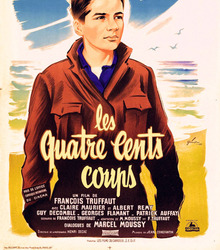
View On WordPress
0 notes
Text
The artist’s garden at Vétheuil (no date) Art Object Page. Available at: https://www.nga.gov/collection/art-object-page.52189.html (Accessed: 08 November 2023).
Previous work - Nessie Ramm (2022) nessie ramm - contemporary landscape artist. Available at: https://nessieramm.co.uk/previous-work/ (Accessed: 08 November 2023).
Jungbauer, J. (2019) Intricate collages of cities by Anastasia Savinova, IGNANT. Available at: https://www.ignant.com/2016/03/01/intricate-collages-of-cities-by-anastasia-savinova/ (Accessed: 08 November 2023).
Cirrus clouds (no date) Met Office. Available at: https://www.metoffice.gov.uk/weather/learn-about/weather/types-of-weather/clouds/high-clouds/cirrus (Accessed: 08 November 2023).
(No date) Vincent van Gogh. the starry night. Saint Rémy, June 1889 | moma. Available at: https://www.moma.org/collection/works/79802 (Accessed: 08 November 2023).
About Labyrinth by Mark Wallinger: Labyrinth (2016) Labyrinth |. Available at: https://art.tfl.gov.uk/labyrinth/about/ (Accessed: 08 November 2023).
(No date a) Matt Peers. Available at: https://www.mattpeers.photography/ (Accessed: 08 November 2023).
Gunseli Yalcinkaya |3 October 2018 Leave a comment (2019) Rick Owens sets runway on fire at Paris fashion week show, Dezeen. Available at: https://www.dezeen.com/2018/10/03/rick-owens-spring-summer-2019-show-paris-fashion-week/ (Accessed: 08 November 2023).
Admin (2022) Henriette Ousbäck, the keeper of the fire, 2013., TextileArtist.org. Available at: https://www.textileartist.org/henriette-ousback-stitches-upon-stitches/henrietteousback-eldvakten/ (Accessed: 08 November 2023).
Trigg, D. (no date) Albert Reuss, Studio International: Visual Arts, Design and Architecture. Available at: https://www.studiointernational.com/albert-reuss-review-truro-cathedral-newlyn-art-gallery-holocaust-memorial-day#:~:text=Woman%20Reading%20with%20Mother%2Din,%2C%20Rosa%20(n%C3%A9e%20Feinstein). (Accessed: 08 November 2023).
Kieron Cropper - Picture interview (2015) Kollektiv Gallery. Available at: https://www.kollektivgallery.com/artists/kieron-cropper/ (Accessed: 08 November 2023).
Stitched botanicals (no date) HILLARY WATERS FAYLE. Available at: https://www.hillarywfayle.com/new-page-5 (Accessed: 08 November 2023).
Dmitry (2019) Artist paints creatures she sees ‘living’ in the walls due to Pareidolia, Design You Trust. Available at: https://designyoutrust.com/2019/03/artist-paints-creatures-she-sees-living-in-the-walls-due-to-pareidolia/ (Accessed: 08 November 2023).
Snail trail 1 - limited edition 1 of 1 art print (no date) Saatchi Art. Available at: https://www.saatchiart.com/art/Printmaking-Snail-Trail-1-Limited-Edition-1-of-1/423916/3349282/view (Accessed: 08 November 2023).
(No date a) Banksy. Available at: https://www.banksy.co.uk/out.html (Accessed: 12 November 2023).
Hydrangea by colour (no date a) Hydrangeas by colour / RHS Gardening. Available at: https://www.rhs.org.uk/plants/hydrangea/shrubby/by-colour (Accessed: 12 November 2023).
Dezeen. (2015). Fall dress by Birce Ozkan drops its panels like leaves. [online] Available at: https://www.dezeen.com/2015/06/03/fall-interactive-dress-parsons-fashion-graduate-birce-ozkan-drops-panels-seasons-autumn-leaves/ [Accessed 12 Nov. 2023].
Saxby, C. (no date) CAROLYN SAXBY MIXED MEDIA TEXTILE ART. https://www.carolynsaxby.co.uk/ [Accessed 12 Nov. 2023].
Dazed (2018). The artist using synesthesia to interpret this season’s scents on canvas. [online] Dazed. Available at: https://www.dazeddigital.com/beauty/article/41840/1/synesthesia-this-seasons-scents-on-canvas [Accessed 12 Nov. 2023].
0 notes
Text
Week 2: Essay (The 400 Blows)
The 400 Blows, a film directed by François Truffaut, is a French New Wave cinema masterpiece that explores the coming-of-age story of Antoine Doinel, a troubled adolescent living in Paris in the late 1950s. Truffaut's film is a poetic and lyrical representation of youth and rebellion that captures the innocence, vulnerability, and struggle of growing up. The critically acclaimed film has received widespread praise for its realism, intimacy, and innovative approach to storytelling.
Two critical quotations:
The line "I found out she had wanted to have an abortion" is a significant moment in the film because it reveals the harsh realities of Antoine's family life and the lack of care and attention he receives from his parents. The line is spoken by Antoine to the psychologist. The revelation that Antoine's mother had wanted to have an abortion emphasizes the sense of detachment and neglect in Antoine's family life. It suggests that his mother did not want to have him.
The line "if only he'd confided in us" is significant as it highlights the theme of communication and the lack of it in Antoine's life. Throughout the movie, Antoine, the protagonist, struggles to communicate with the people around him, including his parents, teachers, and friends.
It reveals the missed opportunities for Antoine to receive support and understanding from his parents. It also draws attention to the importance of communication in relationships, especially between parents and their children, and how the lack of it can lead to misunderstandings and difficulties.

Basic Facts and Context:
The 400 Blows was released in 1959, and it was François Truffaut's directorial debut. The film was loosely based on Truffaut's own experiences as a troubled youth, and it was shot on location in Paris. The film's title comes from the French idiom "faire les quatre cents coups," which means get into mischief or raise hell. The film's main character is Antoine Doinel, a rebellious adolescent who struggles to find his place in the world. The film stars Jean-Pierre Léaud as Antoine, with Albert Rémy and Claire Maurier playing his parents.
Critical Reception:
The 400 Blows has been widely praised by critics and audiences alike since its release. The film won the Best Director award at the 1959 Cannes Film Festival and has since become regarded as a classic of French cinema. Renowned film critic Roger Ebert called the film "one of the most intensely touching stories ever made about a young adolescent," while filmmaker Martin Scorsese has said that the film "changed his life" and inspired him to become a filmmaker.
Historical Context:
The 400 Blows was released at a time of significant social and cultural change in France. The film was made during the height of the French New Wave movement, which was characterized by its rejection of traditional Hollywood-style filmmaking and its focus on realism, improvisation, and personal expression. The film also reflects the social and cultural tensions of French society in the mid-20th century, particularly around issues of youth delinquency and social inequality. The film's portrayal of Antoine as a troubled adolescent who is caught between childhood and adulthood reflects the changing attitudes towards youth and adolescence in post-war France.
Style, Look-and-Feel:
The 400 Blows is a visually stunning film that is characterized by its innovative approach to storytelling and its use of unconventional film techniques. The film is shot in black and white, with a documentary-style realism that captures the vibrancy and energy of Paris in the late 1950s. Truffaut uses long takes, handheld camera movements, and jump cuts to create a sense of immediacy and intimacy that draws the viewer into Antoine's world. The film also features a memorable score by Jean Constantin, which adds to the film's emotional impact.
How is the movie conventional vs. unconventional?
The 400 Blows is a film that is both conventional and unconventional in its approach to storytelling. On the one hand, the film follows the conventional structure of a coming-of-age story, with Antoine as the protagonist who must navigate the challenges of adolescence to find his place in the world. However, the film is also unconventional in its use of film techniques, its rejection of traditional Hollywood-style filmmaking, and its focus on realism and improvisation. Truffaut's film is a poetic and lyrical representation of youth and rebellion that captures the innocence, vulnerability, and struggle of growing up in an innovative and unconventional way.
Visual Elements:
One of the most memorable visual elements of The 400 Blows is the film's final shot, which shows Antoine looking directly at the camera as he runs toward the ocean. This shot is an iconic moment in cinema history, and it captures the sense of freedom.
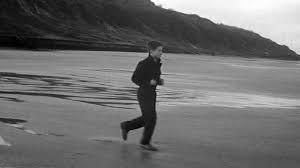
Truffaut, François. The 400 Blows. 1959.
Ebert, Roger. "The 400 Blows Movie Review (1959) | Roger Ebert." RogerEbert.com. 23 March 2003, https://www.rogerebert.com/reviews/great-movie-the-400-blows-1959.
Scorsese, Martin. "How 'The 400 Blows' Changed My Life." The Criterion Collection. 8 May 2009, https://www.criterion.com/current/posts/845-how-the-400-blows-changed-my-life.
Naremore, James. "The 400 Blows." The Criterion Collection. 2009, https://www.criterion.com/current/posts/845-how-the-400-blows-changed-my-life.
Lefèvre, Raymond. "The 400 Blows: 50 Years After." Senses of Cinema. Issue 53, 2009, http://sensesofcinema.com/2009/feature-articles/the-400-blows-50-years-after/.
Roud, Richard. "The French New Wave: An Artistic School." The Guardian. 13 February 2009, https://www.theguardian.com/film/2009/feb/13/french-new-wave-richard-roud.
Williams, Alan. Republic of Images: A History of French Filmmaking. Harvard University Press, 1992.
0 notes
Link
Autobiográfico
Rapaz rebelde, com pouco apoio familiar, que acaba ao cuidado de uma instituição.
0 notes
Text
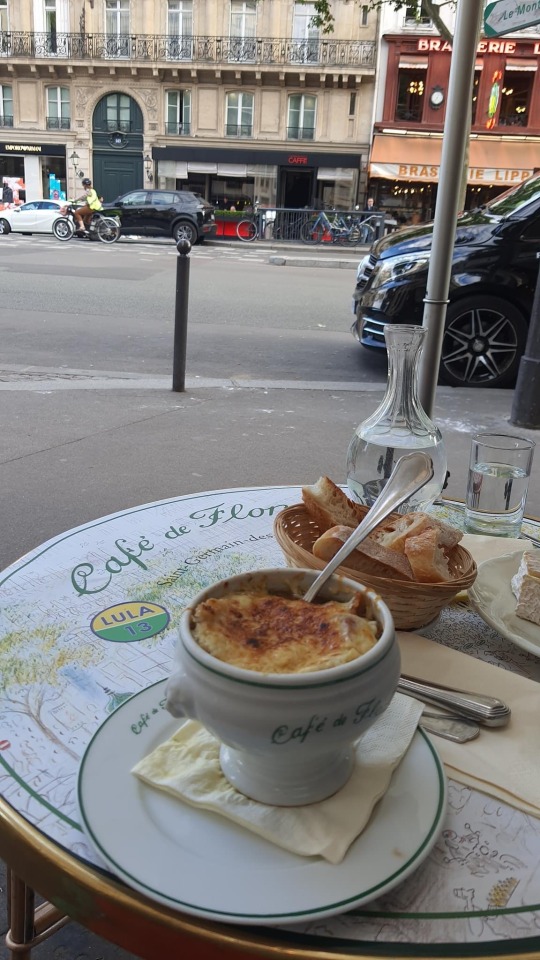

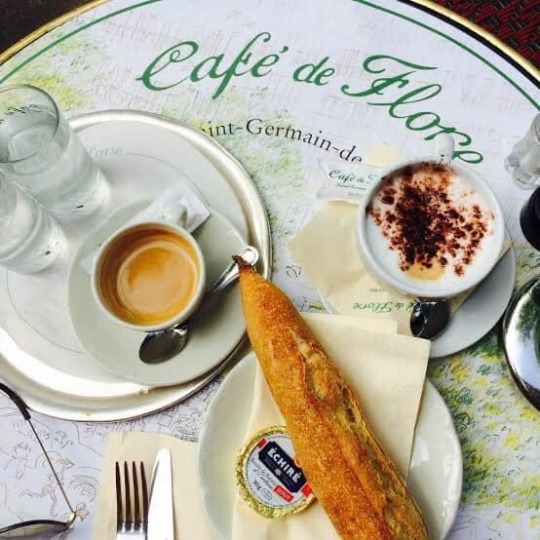

Café de Flore é um café localizado na esquina do boulevard Saint-Germain e rue Saint-Benoît, no distrito de Saint-Germain-des-Prés, em Paris, França. É famosa por ter sido frequentada por importantes intelectuais e artistas ao longo de sua história, como Joris-Karl Huysmans, Rémy de Gourmont, Charles Maurras, Georges Bataille, Robert Desnos, Léon-Paul Fargue, Raymond Queneau, Jean-Paul Sartre, Albert Camus, Pablo Picasso e Zhou Enlai.
1 note
·
View note